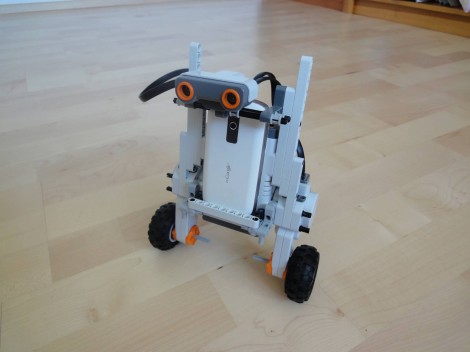
Self-balancing robots are pretty cool, but sometimes a bit too complex to make. [HippoDevices] shows us that it’s really not that hard, and you can even do it with Lego NXT and an Android device!
First step is to build your two-wheeled robot – go nuts! As long as the Lego NXT motors are strong enough you’ll be able to make most different shaped robots easy to balance. You’re going to need an Android ADK board to provide communication between the Lego motors and your Android device. [HippoDevices] is using their own design, called the Hippo-ADK which is on Kickstarter currently.
This allows your Android device to read the status and control the Lego Motors — from there it’s just a matter of programming it to balance according to the device’s gyroscope.
Continue reading “Self-Balancing Robot Uses Android And Lego NXT”
















